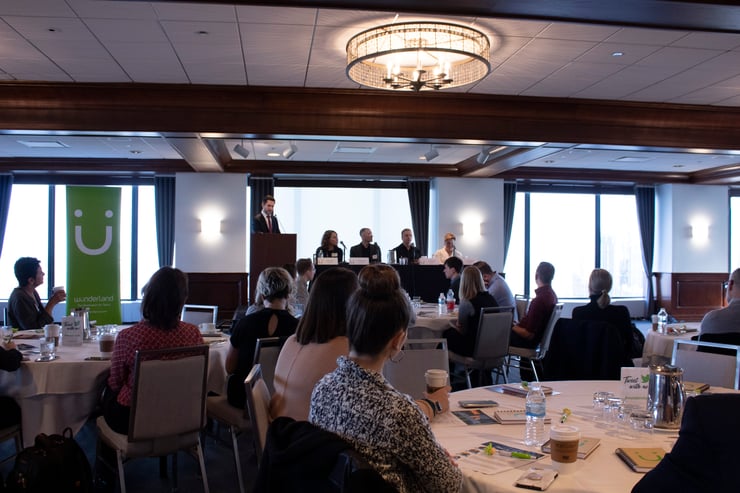
The writing is on the wall for businesses that fail to adopt digital technologies across their organization. According to IDC, 85% of decision makers believe they have only two years to go through their digital transformations before it affects their businesses financially.
During our recent WunderChat, we discussed one of the biggest ways a lack of a digital strategy impacts businesses - the customer experience. We assembled four expert panelists to lead us through their experiences undertaking digital transformation at their organizations, focusing on the impact on the customer relationship. The panel included:
While the conversation covered a lot of ground, the three biggest takeaways for the audience were all related to having the right mindset, goals and approach to digital transformation, right from the start.
Keep your customers front and center.
All four panelists shared the importance of keeping the customer experience at the forefront. Magnani’s Justin Daab suggested going so far as to leave the word “digital” out of it. He instead emphasized the importance of considering the customer first and asking yourself how you can elevate their experience through technology. He ranks this as the most important thing that he helps his own clients understand when they partner with his experience design and strategy firm, Magnani.
Kate Adams with United Airlines seconded this viewpoint, stressing the importance of connecting digital with other touchpoints, creating one seamless, end-to-end experience that customers will really feel. A GLADLY report found that there’s more work to be done on this front, with 71% of consumers saying they want a consistent experience across all channels, but only 29% feeling that they actually get it.
Don’t implement technology for technology’s sake.
Don’t let the news headlines and industry statistics be a scare tactic. Morningstar’s Shelby Bower cautioned that when it comes to technology, just because you can doesn’t mean you should. It’s easy to get excited about new tools, but implementing it before you - or the technology - are ready will have a more negative impact than doing nothing at all.
Kate Adams from United Airlines brought up the “shiny object syndrome” and shared that every company she’s ever worked for has had it. But, it’s really all about finding balance. How you do that is by tying that new, cool technology back to the customer need. Jeff Blanchard from Highland Solutions echoed the same sentiments. At the end of the day, he said, technology should be built to solve your clients’ biggest issues, not just because it’s cool.
Set yourself up for success from the start.
Shelby Bower from Morningstar suggested facilitating a workshop to make sure stakeholders are all on the same page. She shared that it’s all about having the right conversation at the right time with the right people. And speaking of getting on the same page, Justin Daab from Magnani went so far as to say that you need to identify the problems you’re trying to solve, and then not move any further until everyone agrees.
United’s Kate Adams expressed the importance of having a solid process in place for going forward. Justin Daab with Magnani had this advice for the audience - when deciding on a path forward, choose a technology that you can execute really well, and do that before moving on to others.
All of our panelists shared valuable insights to help the audience understand the impact of digital transformation on the customer experience. At the end of the day, your customers come first. If you’re looking for digital talent to help you on your path to digital transformation, REACH OUT TO US to learn more about how we can help.